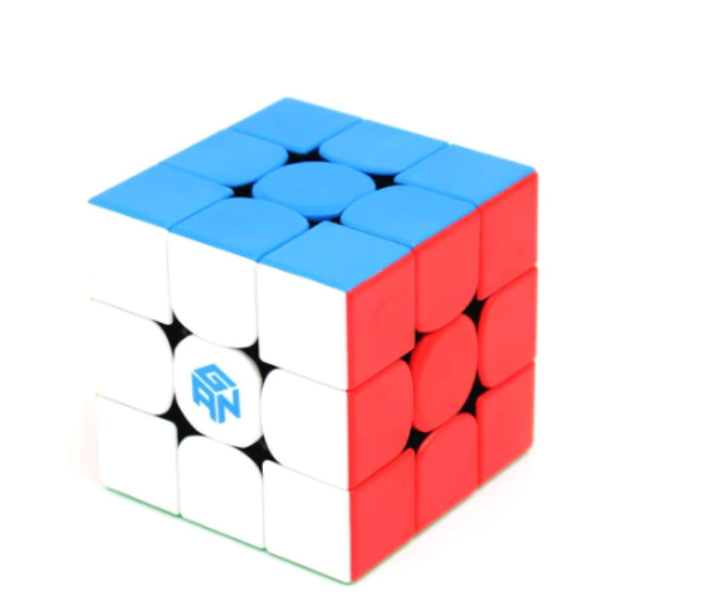The GAN Cube, including the popular infinity cube, is a high-quality mechanical puzzle that requires proper maintenance to ensure optimal performance. Whether you are a beginner or an advanced solver, taking care of your GAN Cube is essential to keep it in top shape and achieve faster solving times. In this article, we will explore the key maintenance tips for GAN Cubes, including cleaning, lubrication, tensioning, and storage, to help you keep your cube performing at its best.

Cleaning Your GAN Cube
Keeping your GAN Cube clean is crucial for its performance. Over time, dust, dirt, and debris can accumulate on the cube’s moving parts, causing friction and affecting its smoothness. Here are some steps to clean your gan cube effectively:
Disassemble the Cube: Most GAN Cubes are designed to be easily taken apart for cleaning. Carefully disassemble the cube, taking note of the orientation and arrangement of the pieces.
Clean the Pieces: Use a soft brush or compressed air to remove dust and debris from the individual pieces of the cube. You can also use mild detergent and water to clean the pieces, but avoid using harsh chemicals that may damage the plastic.
Clean the Core and Springs: The core and springs of the GAN Cube also need to be cleaned. Use a cotton swab or a soft cloth to wipe the core and springs, removing any dirt or residue.
Dry and Reassemble: After cleaning, make sure all the pieces and core are thoroughly dried before reassembling the cube. Pay attention to the correct orientation and arrangement of the pieces, ensuring they are properly aligned and tensioned.
Lubricating Your GAN Cube
Lubrication is essential for smooth and fast rotations of your GAN Cube. Proper lubrication can reduce friction, prevent lock-ups, and improve the cube’s overall performance. Here’s how you can lubricate your GAN Cube effectively:
Choose the Right Lubricant: There are various types of lubricants available for Rubik’s cubes, including silicone-based and Teflon-based lubricants. Experiment with different types and amounts of lubricants to find the one that suits your preferences and solving style. GAN also offers its own line of lubricants specifically designed for its cubes.
Apply Lubricant to the Core and Springs: Disassemble the cube and apply a few drops of lubricant to the core and springs. Spread the lubricant evenly by turning the cube in different directions to ensure all the parts are coated.
Apply Lubricant to the Pieces: You can also apply a small amount of lubricant to the pieces of the cube, especially the contact points between the pieces. This can help reduce friction during rotations and make the movements smoother.
Wipe Excess Lubricant: After applying the lubricant, use a clean cloth or paper towel to wipe off any excess lubricant from the pieces and core. Too much lubricant can cause the cube to feel overly slippery and affect its performance.
Reassemble and Test: Once you have applied the lubricant and wiped off the excess, reassemble the cube and test its movements. If needed, you can add more lubricant or adjust the tension to achieve the desired feel.
Tensioning Your GAN Cube
Tensioning is the process of adjusting the tightness of the screws in the cube’s core to control it’s turning resistance. Proper tensioning is crucial for achieving the optimal feel and performance of your GAN Cube. Here’s how you can tension your cube effectively:
Understand Tensioning: Tensioning involves adjusting the screws in the core of your GAN Cube to control the tightness of the cube’s movement. It determines how loose or tight the cube feels when you turn its layers. Tensioning is a personal preference and can vary depending on your solving style and speed.
Disassemble the Cube: To tension your GAN Cube, you need to disassemble it to access the core. Carefully take apart the cube, keeping track of the orientation and arrangement of the pieces.
Adjust the Screws: The core of your GAN Cube has screws that control the tension of the cube. Use a screwdriver to loosen or tighten the screws to achieve the desired tension. Looser screws will make the cube feel more loose and fast, while tighter screws will make it feel more stable and controllable.
Test the Cube: After adjusting the screws, reassemble the cube and test its movements. Turn the layers to check if the tension feels comfortable and allows for smooth rotations. If the cube feels too loose or too tight, you can further adjust the screws until you achieve the desired feel.
Fine-Tune the Tension: Tensioning is a trial-and-error process, and it may take some time to find the perfect tension for your cube. You can fine-tune the tension by making small adjustments to the screws until you achieve the desired performance.
Conclusion
Proper maintenance is crucial for keeping your GAN Cube, including the Infinity Cube, performing at its best. Regular cleaning, lubrication, tensioning, and proper storage can help extend the lifespan of your cube, prevent wear and tear, and ensure smooth and fast rotations. By following these maintenance tips, you can enjoy solving your GAN Cube to its fullest potential and achieving faster solving times. Happy cubing!
Read also more information
